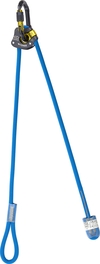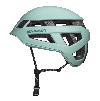Vietnam Psicobloc - deep water soloing at Ha Long Bay
Steve and Angie Bradshaw provide some hands-on, in-depth information to the Psicobloc bouldering around Ha Long Bay, Vietnam
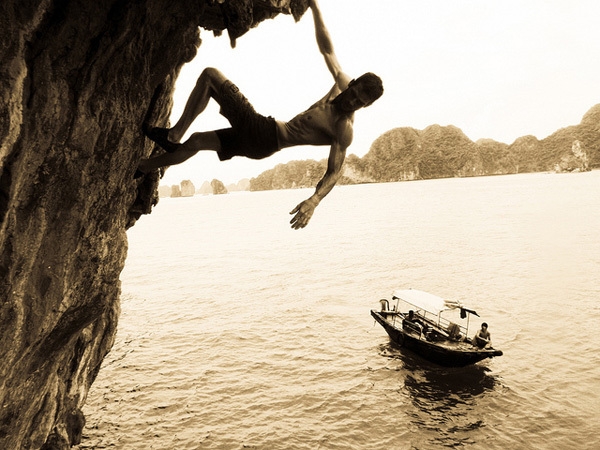
 1 / 33
1 / 33
Trying a new line on the Unemployment wall
 achive Steve & Angie Bradshaw
achive Steve & Angie Bradshaw
Despite its long-time placement on the climbing world map, Vietnam’s Ha Long Bay remains shrouded in mystery, often hyped but seldom profiled. Beyond the heavily-skewed website of the local guiding company, we struggled to find good information online. Hopefully here we can pull the veil back a bit to reveal a destination with great natural beauty but also a number of frustrations.
Years ago, I remember seeing pictures of Lynn Hill and Todd Skinner “on expedition” climbing impressive limestone towers above strange-looking junk boats. I could hardly imagine a more exotic climbing destination. The more recent Klem Loskott/Tim Emmett segment in Dosage 3 along with Chris Lindner’s amped-up deep water solo segment in Players provided us with all the dreamy footage we needed to bid our new Mexican amigos farewell and hop on a plane for some psicobloc. (Yes, this is the actual Spanish word for deep water soloing.)
Rather than an idyllic paradise the town of Cat Ba, where most climbers stay, is a jumble of highrise buildings, bustling litter-lined streets and aggressive hawkers. During summer months (aka the season for deep water soloing), the town hums with thousands of Vietnamese escaping the hot interior. Not exactly the stuff of marketing brochures.
We soon discovered that no detailed map of the bay exists (even in the guide book!) This is partly to do with the history of the area and partly an act of downright protectionism by the local guiding company. Thus, we started our own map of the islands, building it up gradually as we visited more spots and gleaned tips from other climbers. Surprisingly, our tacky little map ended up being crucial in finding and returning to walls without a guide.
This was our first trip focused on deep water soloing. What a terrifying sport! Nothing compares to the feeling of an insecure move 20 meters in the air with the breeze blowing tiny ripples in the water. On one occasion, I took a bad blow to my chin on a 25 meter jump and thought I’d reached my height limit. Fortunately, I learned a much better fall position (with arms crossed over the chest right before you hit the water) that helps make for less violent entries. Now to get my head to accept that!
The mainland crag, Butterfly Valley, sits tucked-away in a butterfly sanctuary 20 minutes from Cat Ba town – accessed via an exhilarating scooter trail through the hills. One of the highlights of the trip for me was opening a new project at Butterfly Valley, Cosmic Karmic Punch (or something like that). The route was smooth, slopey, and provided a great challenge given the humidity. I think the grade will probably settle around 8a+, although it was hard to tell given conditions. Otherwise, the trip was more about exploring and climbing untouched rock than about pushing athletic limits.
Cat Ba is all about the seafood, or more specifically, seeing your dinner swim or crawl around desperately before it finds its way to your plate. Apparently tanks cost less than refrigeration. It’s pretty obvious that most of the island’s Vietnamese visitors come for the seafood.
We were lucky to connect with Hai, an exceedingly friendly boat driver who steered us around the bay without breaking the bank. Hai took us to his home, a one-bedroom floating seafood farm where he lives with his family. Apparently people (and their dogs) will stay afloat for months on end, rarely making trips to the mainland. We also got to witness the famous foot-peddled row boats.
Our biggest struggle was the lack of a true climbing ‘scene’. The overall number of long-term visiting climbers was surprisingly low for the profile of the area and dropped down to just us on a few occasions. Luckily, we met just enough quality climbers to create a fun communal atmosphere. On a rest day, a crew of us took out a boat and some kayaks to explore Ha Long and Lan Ha bays. We were rewarded with private beaches, sea caves, natural arches, and enclosed lagoons – so much for resting.
Tips and Suggestions
After meeting several disappointed climbers around Cat Ba, we concluded that the problem has to do with expectations. Don’t expect the Tonsai, Thailand experience – you just won’t find the same long-stay climbing community, the quantity or quality of established climbing, or the laid-back holiday atmosphere. Rather, expect to be hassled, scammed, occasionally shouted at, to have to pay to climb, and, if you go during summer, to battle the heat and humidity on the mainland (conditions are fortunately nicer on the bay). What you’ll get in return is a hard-earned, foreign-feeling climbing experience with lots of potential to explore and discover your own unclimbed sea cliffs.
Much of the development of the area was done by the resident guiding company, Slo-Pony Adventures (soon to be renamed), who have done a lot for climbing in Vietnam but sadly keep a tight reign on local access and information. They just don’t cater to the experienced, long-stay climber and their pricing and service offerings reflect this. We were dismayed to learn that their deep water solo day trips are at cheapest $30 per person when the boat is filled (when it’s not, prices go up steeply). See tip #5 for details on arranging a private boat for less.
1) When to go and how long to stay
Although you can climb year round, it seems best to go during either spring or fall (March or September), when you can enjoy both the mainland and the deep water soloing – and miss the crowds of Vietnamese tourists. For climbing on the mainland, the recommended season is mid-September through early March when conditions are supposedly crisp and even chilly – especially mid-winter around December/January.
For deep water soloing, we’ve been told the the best times are late February through early June or September/October when the water is more pleasant and temps aren’t too high. As the water keeps the heat down substantially, head to the bay if the mainland becomes too hot and humid. If you’re traveling by yourself or in a small group, we recommend a stay of one to two weeks given the amount of established climbing and the time it takes to get set up and locate the good walls. If you’re a big group planning to live on a boat, stay longer.
2) Climbing on the mainland
The cheapest way to climb is to head to the mainland crag, Butterfly Valley, which sports about twenty-five fun and engaging (but probably not world-class) limestone sport routes. To get there, rent scooters ($5 per day from the bike rental outfit on the main drag or rent for the same price from Zoom – see below), pick up permits from Slo-Pony (another couple dollars) and pack lots of water and mosquito coils! Most importantly, if you’re there in summer, go early! The heat and humidity are far lower in the early morning (until about 9:30am). The crag gets in shade again in the afternoon but the humidity stays high. Alternatively you can walk down to the harbor where there are 3 or 4 harder routes but also a fair amount of noise and litter.
3) The best deep water solo spots
Our favourite walls, in order of preference, were:
- Unemployment and Polish Pillar (next to each other) and Stingray (across the channel)
- Le Mekong and Fisherman’s Way (high, good quality steep walls but a rough channel ride away from the other areas)
- Jelly Fish (easier climbing but fun)
- Hawaii-50 and Three Brothers (vertical, easier climbing but without well defined lines)
- Turtle Cave (not a lot of climbing, but a cool feature). The channel to the north of Turtle Cave has a fun unnamed wall (the first picture in this post)
4) Tides
Despite no mention of it on the Slo-Pony website, tides are really important for most of the deep water soloing and at times can prevent trips going out for five-day periods. Low tide presents two problems. Firstly, it’s difficult to get on many climbs given the undercut nature of the rock. This isn’t much of a problem if you climb 7a and above but can add a good few grades to the easier routes. Secondly, some of the walls are too shallow to climb at during low tide. Despite this, we never had problems even at low tide. Just test the fall zones beforehand and be creative to get onto the wall.
That said, you’ll be hard-pressed convincing Slo-Pony folks to go out during a low tide day as they’ve had too many experiences of newbies not being able to get off the boat. Therefore, if you’re planning to go out with them, make sure to get tide-tables before you arrive. If you’re organizing your own boat, don’t worry too much about the tides, although do try to plan around them if possible.
5) Boats
If you are in Cat Ba for more than a few days and are an experienced climber, you should definitely try to find a private boat owner to take you out into the bay. Slo-Pony may help you arrange this but don’t expect assistance in this regard. The best idea is probably to do your first trip with Slo-Pony to get to know the bay and chat with them to see what they’re willing to do for you. If the answer is nothing, proceed to plan B!
Plan B: Finding a private boat: As of June 2011, the cost for a private boat should run between 600-700 dong, or about $30 (steer clear of per person negotiations). This should cover up to six people from early morning (we left at 7:30am) until about 6pm. Although there are lots of people with connections to boats, two potential options are:
a) Zoom, a street restaurant-owner and motorbike lessor who is a fluent English-speaker and very solid guy. His restaurant is in the side alley on the right hand side on the way up the hill from Slo-Pony. Ask for him at the third street-food shack on the right as you walk up the alley, they’re the one with 7 dong (33 cents) draft beer. This is also the cheapest place to buy food, and of course, draft beer!
b) Luong, a crazed wheeling-and-dealing restaurant owner at the Dolphin Hotel on the right about 50m up the hill from Slo-Pony. Luong hooked us up with Hai, a very cool boat driver who never stopped smiling – a rare find in the place famously called the land of frowns! Despite his deal-making tendencies, Luong’s rates are pretty competitive. We stayed in a small room with no air-conditioning in his hotel above the restaurant for just $5 per night.
You may be told that it’s illegal to leave the harbor in a basket boat but don’t be concerned – we never experienced problems in this regard. Keep in mind that it’s also illegal to ride scooters and rent private rooms that aren’t official hotels, and that doesn’t stop anybody. You pay an official fee of one dollar to the harbour police right before you step onto the boat and they happily wave you off.
If you do arrange a private boat, know that though your driver may speak English, there’s no guarantee of this. Definitely bring a map along to help bridge the communication gap. My recommendation would be to show the driver a picture of the Polish Pillar which seems to be a well-known landmark and ask him to take you directly there. The trip out should take about one hour. The Pillar has plenty of fun soloing at all grades and Unemployment wall is right next door. You can also take a land break at a little beach right nearby. Stingray wall, which has an obvious scooped-out white section, is across the channel from the Pillar and a quick boat ride away. Although not in the guidebook, Stingray has a classic diagonal 6c crack along with some harder steep projects to the right and some easy vertical climbs further to the right.
On the way back, ask your driver to take you to Three Brothers and Hawaii-50 which most boatmen seem to know how find. Given that this is the most climbed area, if you don’t provide clear direction, you’ll probably be brought straight here.
6) Kayaks
We preferred deep water soloing off of kayaks as it means less noise, pollution and hassle of the basket boat doing laps in to the wall. Double kayaks were about $7 a day to rent and were easily towed behind the boat. You can speak to the boat driver, who can make a stop on the way out of the harbour to pick them up. Note that you may find the kayaks too low in the water to get up onto the rock at low tide. Once again, if you’re strong and/or creative you can get around this. However, it may be easier to just use the boat and avoid the cost of kayaks.
6) Multi-day boat trips
Although it’s a lot more expensive than day tripping, you can arrange multi-day boat trips with either Slo-Pony or other operators around Cat Ba Town. I would recommend you try an overnight trip if you have a big group (which seems to be defined as ten or more) as you’ll get to much more remote spots in the northern parts of Ha Long Bay. You’ll also avoid the noise and hassle of Cat Ba town. However, don’t underestimate how hard hit your skin will be after multiple days in the water!
7) Guidebook
Unless you’re a collector, the guidebook is probably not worth getting. It lacks maps for climbing in the bay, only includes a sampling of areas and routes, and just doesn’t come in very handy. Better to find other climbers (hanging out at Slo-Pony or at one of the more Western-oriented restaurants) and tag along with them. Likewise, climbers at Butterfly Valley will happily help you find routes, and worst-comes-to-worst, it’s not all that difficult to tell the hard routes from the easy ones. We lost our book halfway through the trip and never missed it. With deep water soloing, you’ll be in the hands of your boat driver – guidebook or not.
8 ) Coffee and breakfast
If coffee is important to you, bring your own. The local brew is pricey and closer to battery acid than coffee. If you’re big on breakfast cereal, you should bring that too. We discovered sticky rice, sold on the side of the street in big metal pots, and added bananas and milk. A good, cheap breakfast for those that don’t like pho in the morning.
9) Rest days
You can easily scooter to the national park and climb the lookout tower in a half day. You can also take a boat tour of Lan Ha and Ha Long Bay, involving kayaking and snorkeling. Otherwise, hanging out on Cat Ba 2 beach is not a bad option.
Years ago, I remember seeing pictures of Lynn Hill and Todd Skinner “on expedition” climbing impressive limestone towers above strange-looking junk boats. I could hardly imagine a more exotic climbing destination. The more recent Klem Loskott/Tim Emmett segment in Dosage 3 along with Chris Lindner’s amped-up deep water solo segment in Players provided us with all the dreamy footage we needed to bid our new Mexican amigos farewell and hop on a plane for some psicobloc. (Yes, this is the actual Spanish word for deep water soloing.)
Rather than an idyllic paradise the town of Cat Ba, where most climbers stay, is a jumble of highrise buildings, bustling litter-lined streets and aggressive hawkers. During summer months (aka the season for deep water soloing), the town hums with thousands of Vietnamese escaping the hot interior. Not exactly the stuff of marketing brochures.
We soon discovered that no detailed map of the bay exists (even in the guide book!) This is partly to do with the history of the area and partly an act of downright protectionism by the local guiding company. Thus, we started our own map of the islands, building it up gradually as we visited more spots and gleaned tips from other climbers. Surprisingly, our tacky little map ended up being crucial in finding and returning to walls without a guide.
This was our first trip focused on deep water soloing. What a terrifying sport! Nothing compares to the feeling of an insecure move 20 meters in the air with the breeze blowing tiny ripples in the water. On one occasion, I took a bad blow to my chin on a 25 meter jump and thought I’d reached my height limit. Fortunately, I learned a much better fall position (with arms crossed over the chest right before you hit the water) that helps make for less violent entries. Now to get my head to accept that!
The mainland crag, Butterfly Valley, sits tucked-away in a butterfly sanctuary 20 minutes from Cat Ba town – accessed via an exhilarating scooter trail through the hills. One of the highlights of the trip for me was opening a new project at Butterfly Valley, Cosmic Karmic Punch (or something like that). The route was smooth, slopey, and provided a great challenge given the humidity. I think the grade will probably settle around 8a+, although it was hard to tell given conditions. Otherwise, the trip was more about exploring and climbing untouched rock than about pushing athletic limits.
Cat Ba is all about the seafood, or more specifically, seeing your dinner swim or crawl around desperately before it finds its way to your plate. Apparently tanks cost less than refrigeration. It’s pretty obvious that most of the island’s Vietnamese visitors come for the seafood.
We were lucky to connect with Hai, an exceedingly friendly boat driver who steered us around the bay without breaking the bank. Hai took us to his home, a one-bedroom floating seafood farm where he lives with his family. Apparently people (and their dogs) will stay afloat for months on end, rarely making trips to the mainland. We also got to witness the famous foot-peddled row boats.
Our biggest struggle was the lack of a true climbing ‘scene’. The overall number of long-term visiting climbers was surprisingly low for the profile of the area and dropped down to just us on a few occasions. Luckily, we met just enough quality climbers to create a fun communal atmosphere. On a rest day, a crew of us took out a boat and some kayaks to explore Ha Long and Lan Ha bays. We were rewarded with private beaches, sea caves, natural arches, and enclosed lagoons – so much for resting.
Tips and Suggestions
After meeting several disappointed climbers around Cat Ba, we concluded that the problem has to do with expectations. Don’t expect the Tonsai, Thailand experience – you just won’t find the same long-stay climbing community, the quantity or quality of established climbing, or the laid-back holiday atmosphere. Rather, expect to be hassled, scammed, occasionally shouted at, to have to pay to climb, and, if you go during summer, to battle the heat and humidity on the mainland (conditions are fortunately nicer on the bay). What you’ll get in return is a hard-earned, foreign-feeling climbing experience with lots of potential to explore and discover your own unclimbed sea cliffs.
Much of the development of the area was done by the resident guiding company, Slo-Pony Adventures (soon to be renamed), who have done a lot for climbing in Vietnam but sadly keep a tight reign on local access and information. They just don’t cater to the experienced, long-stay climber and their pricing and service offerings reflect this. We were dismayed to learn that their deep water solo day trips are at cheapest $30 per person when the boat is filled (when it’s not, prices go up steeply). See tip #5 for details on arranging a private boat for less.
1) When to go and how long to stay
Although you can climb year round, it seems best to go during either spring or fall (March or September), when you can enjoy both the mainland and the deep water soloing – and miss the crowds of Vietnamese tourists. For climbing on the mainland, the recommended season is mid-September through early March when conditions are supposedly crisp and even chilly – especially mid-winter around December/January.
For deep water soloing, we’ve been told the the best times are late February through early June or September/October when the water is more pleasant and temps aren’t too high. As the water keeps the heat down substantially, head to the bay if the mainland becomes too hot and humid. If you’re traveling by yourself or in a small group, we recommend a stay of one to two weeks given the amount of established climbing and the time it takes to get set up and locate the good walls. If you’re a big group planning to live on a boat, stay longer.
2) Climbing on the mainland
The cheapest way to climb is to head to the mainland crag, Butterfly Valley, which sports about twenty-five fun and engaging (but probably not world-class) limestone sport routes. To get there, rent scooters ($5 per day from the bike rental outfit on the main drag or rent for the same price from Zoom – see below), pick up permits from Slo-Pony (another couple dollars) and pack lots of water and mosquito coils! Most importantly, if you’re there in summer, go early! The heat and humidity are far lower in the early morning (until about 9:30am). The crag gets in shade again in the afternoon but the humidity stays high. Alternatively you can walk down to the harbor where there are 3 or 4 harder routes but also a fair amount of noise and litter.
3) The best deep water solo spots
Our favourite walls, in order of preference, were:
- Unemployment and Polish Pillar (next to each other) and Stingray (across the channel)
- Le Mekong and Fisherman’s Way (high, good quality steep walls but a rough channel ride away from the other areas)
- Jelly Fish (easier climbing but fun)
- Hawaii-50 and Three Brothers (vertical, easier climbing but without well defined lines)
- Turtle Cave (not a lot of climbing, but a cool feature). The channel to the north of Turtle Cave has a fun unnamed wall (the first picture in this post)
4) Tides
Despite no mention of it on the Slo-Pony website, tides are really important for most of the deep water soloing and at times can prevent trips going out for five-day periods. Low tide presents two problems. Firstly, it’s difficult to get on many climbs given the undercut nature of the rock. This isn’t much of a problem if you climb 7a and above but can add a good few grades to the easier routes. Secondly, some of the walls are too shallow to climb at during low tide. Despite this, we never had problems even at low tide. Just test the fall zones beforehand and be creative to get onto the wall.
That said, you’ll be hard-pressed convincing Slo-Pony folks to go out during a low tide day as they’ve had too many experiences of newbies not being able to get off the boat. Therefore, if you’re planning to go out with them, make sure to get tide-tables before you arrive. If you’re organizing your own boat, don’t worry too much about the tides, although do try to plan around them if possible.
5) Boats
If you are in Cat Ba for more than a few days and are an experienced climber, you should definitely try to find a private boat owner to take you out into the bay. Slo-Pony may help you arrange this but don’t expect assistance in this regard. The best idea is probably to do your first trip with Slo-Pony to get to know the bay and chat with them to see what they’re willing to do for you. If the answer is nothing, proceed to plan B!
Plan B: Finding a private boat: As of June 2011, the cost for a private boat should run between 600-700 dong, or about $30 (steer clear of per person negotiations). This should cover up to six people from early morning (we left at 7:30am) until about 6pm. Although there are lots of people with connections to boats, two potential options are:
a) Zoom, a street restaurant-owner and motorbike lessor who is a fluent English-speaker and very solid guy. His restaurant is in the side alley on the right hand side on the way up the hill from Slo-Pony. Ask for him at the third street-food shack on the right as you walk up the alley, they’re the one with 7 dong (33 cents) draft beer. This is also the cheapest place to buy food, and of course, draft beer!
b) Luong, a crazed wheeling-and-dealing restaurant owner at the Dolphin Hotel on the right about 50m up the hill from Slo-Pony. Luong hooked us up with Hai, a very cool boat driver who never stopped smiling – a rare find in the place famously called the land of frowns! Despite his deal-making tendencies, Luong’s rates are pretty competitive. We stayed in a small room with no air-conditioning in his hotel above the restaurant for just $5 per night.
You may be told that it’s illegal to leave the harbor in a basket boat but don’t be concerned – we never experienced problems in this regard. Keep in mind that it’s also illegal to ride scooters and rent private rooms that aren’t official hotels, and that doesn’t stop anybody. You pay an official fee of one dollar to the harbour police right before you step onto the boat and they happily wave you off.
If you do arrange a private boat, know that though your driver may speak English, there’s no guarantee of this. Definitely bring a map along to help bridge the communication gap. My recommendation would be to show the driver a picture of the Polish Pillar which seems to be a well-known landmark and ask him to take you directly there. The trip out should take about one hour. The Pillar has plenty of fun soloing at all grades and Unemployment wall is right next door. You can also take a land break at a little beach right nearby. Stingray wall, which has an obvious scooped-out white section, is across the channel from the Pillar and a quick boat ride away. Although not in the guidebook, Stingray has a classic diagonal 6c crack along with some harder steep projects to the right and some easy vertical climbs further to the right.
On the way back, ask your driver to take you to Three Brothers and Hawaii-50 which most boatmen seem to know how find. Given that this is the most climbed area, if you don’t provide clear direction, you’ll probably be brought straight here.
6) Kayaks
We preferred deep water soloing off of kayaks as it means less noise, pollution and hassle of the basket boat doing laps in to the wall. Double kayaks were about $7 a day to rent and were easily towed behind the boat. You can speak to the boat driver, who can make a stop on the way out of the harbour to pick them up. Note that you may find the kayaks too low in the water to get up onto the rock at low tide. Once again, if you’re strong and/or creative you can get around this. However, it may be easier to just use the boat and avoid the cost of kayaks.
6) Multi-day boat trips
Although it’s a lot more expensive than day tripping, you can arrange multi-day boat trips with either Slo-Pony or other operators around Cat Ba Town. I would recommend you try an overnight trip if you have a big group (which seems to be defined as ten or more) as you’ll get to much more remote spots in the northern parts of Ha Long Bay. You’ll also avoid the noise and hassle of Cat Ba town. However, don’t underestimate how hard hit your skin will be after multiple days in the water!
7) Guidebook
Unless you’re a collector, the guidebook is probably not worth getting. It lacks maps for climbing in the bay, only includes a sampling of areas and routes, and just doesn’t come in very handy. Better to find other climbers (hanging out at Slo-Pony or at one of the more Western-oriented restaurants) and tag along with them. Likewise, climbers at Butterfly Valley will happily help you find routes, and worst-comes-to-worst, it’s not all that difficult to tell the hard routes from the easy ones. We lost our book halfway through the trip and never missed it. With deep water soloing, you’ll be in the hands of your boat driver – guidebook or not.
8 ) Coffee and breakfast
If coffee is important to you, bring your own. The local brew is pricey and closer to battery acid than coffee. If you’re big on breakfast cereal, you should bring that too. We discovered sticky rice, sold on the side of the street in big metal pots, and added bananas and milk. A good, cheap breakfast for those that don’t like pho in the morning.
9) Rest days
You can easily scooter to the national park and climb the lookout tower in a half day. You can also take a boat tour of Lan Ha and Ha Long Bay, involving kayaking and snorkeling. Otherwise, hanging out on Cat Ba 2 beach is not a bad option.
Note: Steve and Angie Bradshaw
In February 2010, having recently married, South African born Steve Bradshaw and his US-born wife Angie quit their jobs in Los Angeles, sold what they could and hit the open road on a world journey of self-discovery, learning and fun...
To date, they have been to the United States, South Africa, Zimbabwe, Namibia, Argentina, Chile, Mexico, Vietnam and Thailand, and currently are touring the Yosemite Valley in the USA.
Find out more about their travels and climbs on stangie.wordpress.com
In February 2010, having recently married, South African born Steve Bradshaw and his US-born wife Angie quit their jobs in Los Angeles, sold what they could and hit the open road on a world journey of self-discovery, learning and fun...
To date, they have been to the United States, South Africa, Zimbabwe, Namibia, Argentina, Chile, Mexico, Vietnam and Thailand, and currently are touring the Yosemite Valley in the USA.
Find out more about their travels and climbs on stangie.wordpress.com
Latest news
Expo / News
Expo / Products
Adjustable lanyard for mountaineering and rock climbing by Climbing Technology
Climbing shoe designed for climbers looking for comfort.
Light climbing helmet with kevlar reinforcements.
High quality suede gloves designed for via ferrata.
Climbing rope bag Petzl Split
Highly breathable skyrunning t-shirt



 Copia link
Copia link
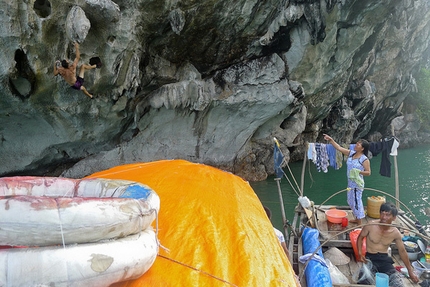
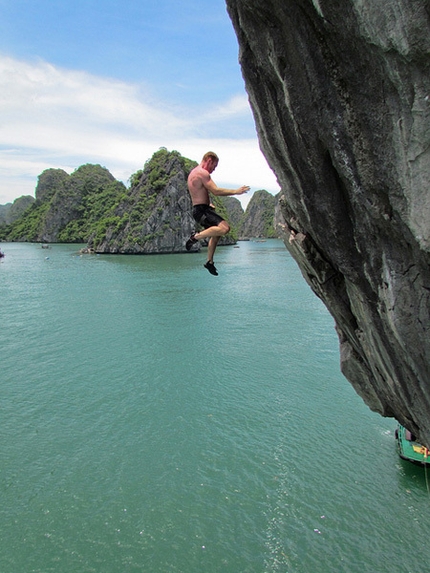
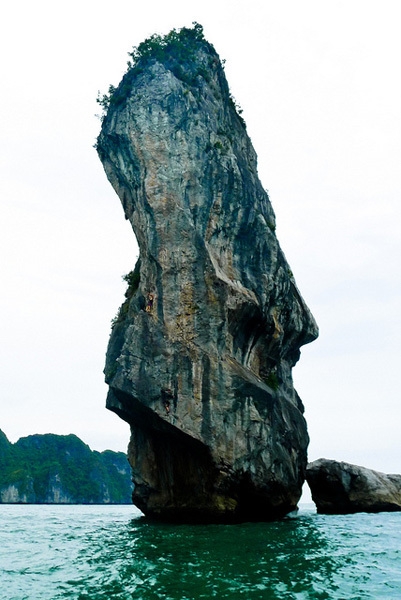
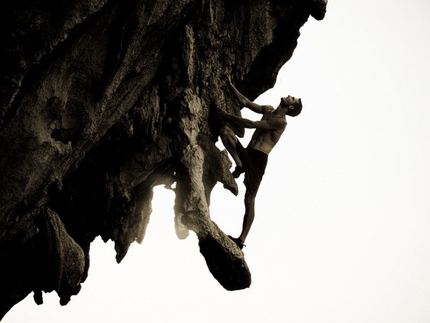
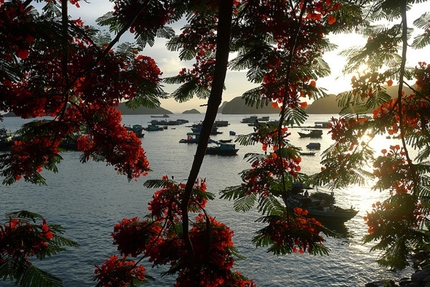
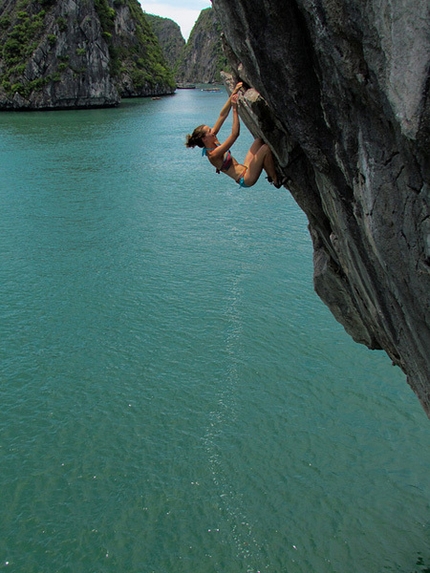
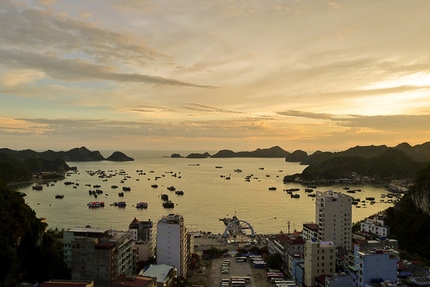
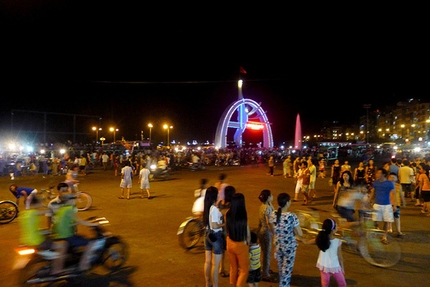
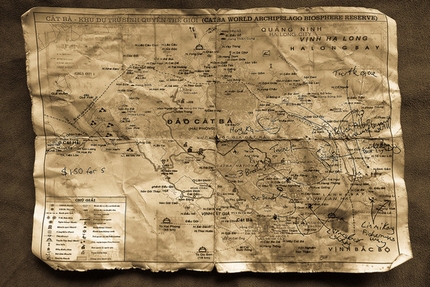
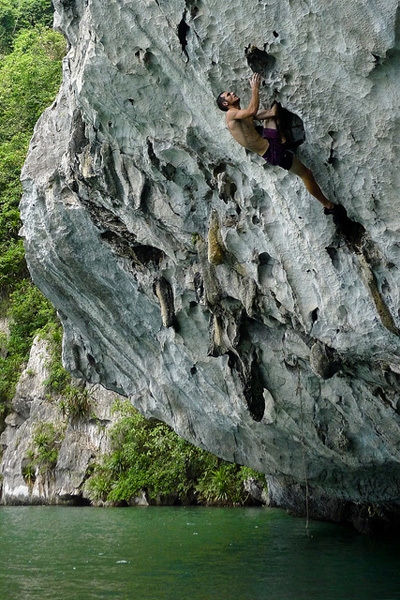
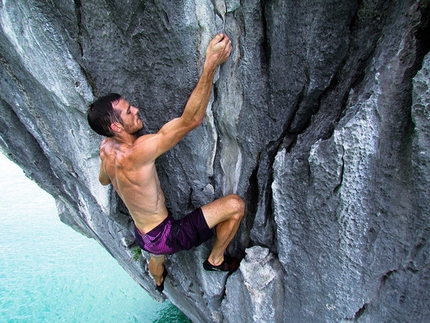
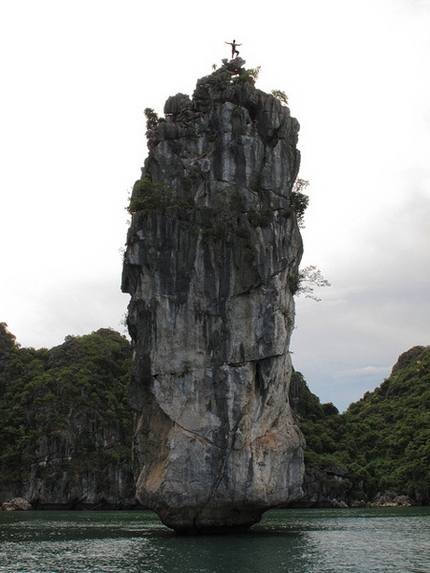
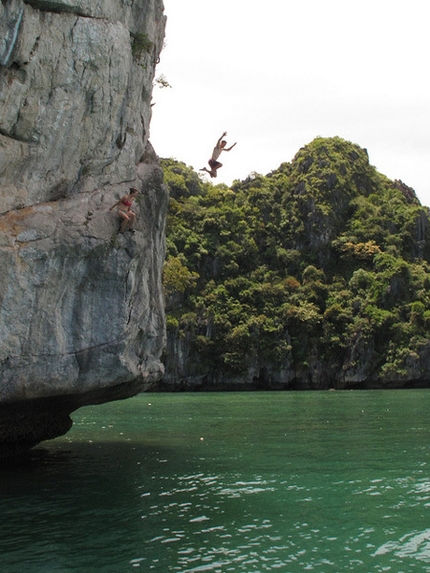
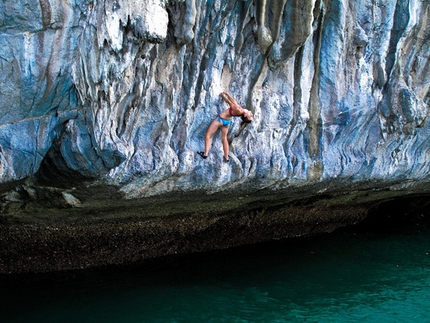
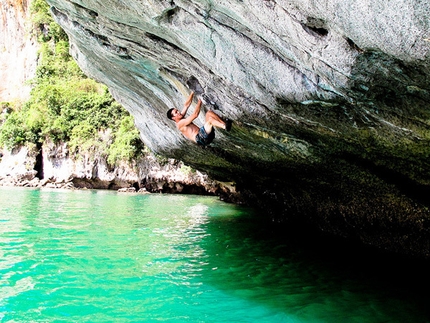

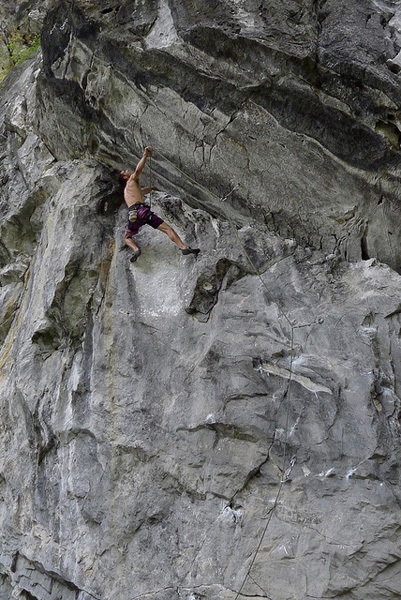

 See all photos
See all photos











